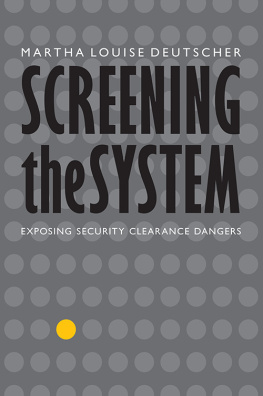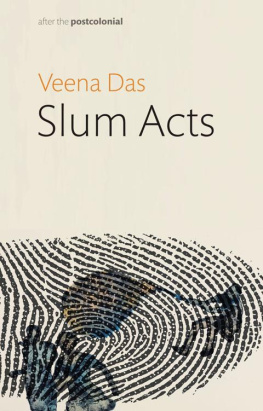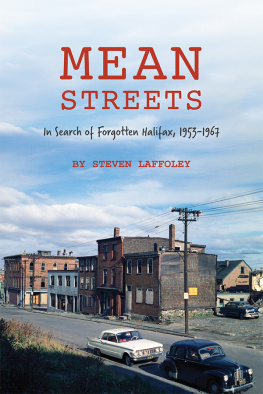ROUTLEDGE LIBRARY EDITIONS:
URBAN STUDIES
Volume 9
SLUM CLEARANCE
SLUM CLEARANCE
The Social and Administrative Context in England and Wales
JOHN ENGLISH, RUTH MADIGAN AND PETER NORMAN
First published in 1976 by Croom Helm Ltd
This edition first published in 2018
by Routledge
2 Park Square, Milton Park, Abingdon, Oxon OX14 4RN
and by Routledge
711 Third Avenue, New York, NY 10017
Routledge is an imprint of the Taylor & Francis Group, an informa business
1976 John English, Ruth Madigan and Peter Norman
All rights reserved. No part of this book may be reprinted or reproduced or utilised in any form or by any electronic, mechanical, or other means, now known or hereafter invented, including photocopying and recording, or in any information storage or retrieval system, without permission in writing from the publishers.
Trademark notice: Product or corporate names may be trademarks or registered trademarks, and are used only for identification and explanation without intent to infringe.
British Library Cataloguing in Publication Data
A catalogue record for this book is available from the British Library
ISBN: 978-1-138-89482-2 (Set)
ISBN: 978-1-315-09987-3 (Set) (ebk)
ISBN: 978-1-138-05719-7 (Volume 9) (hbk)
ISBN: 978-1-315-10532-1 (Volume 9) (ebk)
Publishers Note
The publisher has gone to great lengths to ensure the quality of this reprint but points out that some imperfections in the original copies may be apparent.
Disclaimer
The publisher has made every effort to trace copyright holders and would welcome correspondence from those they have been unable to trace.
SLUM CLEARANCE
The Social and Administrative Context
in England and Wales
JOHN ENGLISH
RUTH MADIGAN
PETER NORMAN
CROOM HELM LONDON
CONTENTS
First published 1976
1976 John English, Ruth Madigan and Peter Norman
Croom Helm Ltd, 2-10 St Johns Road, London SW11
ISBN 0-85664-325-4
Printed and bound in Great Britain by
REDWOOD BURN LIMITED
Trowbridge and Esher
The research on which this book is based arose out of a two-fold interest, first, in the impact of local government redevelopment activities on existing physical and social structures and, second, in the administration of the growing stock of council housing. The field of interest was narrowed down to a specific concern with the administration of slum clearance; it was the main form of redevelopment affecting residential areas and a major source of new tenants of council housing. Yet many of the existing reports on slum clearance suggested that it was an alienating experience which failed to meet residents housing aspirations. The intention was to explore whether this was really the case and, if so, how the situation might be improved. The research was financed by a grant from the Centre for Environmental Studies, awarded to Peter Norman, from October 1968 to September 1972.
The planning, field work and writing up of the study was undertaken jointly by the three researchers with a good deal of overlap and sharing of tasks. There was, however, some division of labour: John English was mainly responsible for work on the historical, legal and administrative background, Ruth Madigan for analysis of the residents survey and Peter Norman for writing up the local authority allocation systems. Drafts of each section of the report were produced by the researcher principally concerned and were edited into their present form by Peter Norman.
Our thanks are due to the many people who made the project possible. First to the Centre for Environmental Studies and particularly to David Donnison who always showed a close interest in our work. Without the willing help of many officials in local authority departments neither the survey nor the analysis of administrative systems would have been possible; we are indebted to the staff of Newcastle-upon-Tyne C.B., Leeds C.B., Manchester C.B., Liverpool C.B., Tower Hamlets L.B., Bingley U.D., Doncaster C.B., Gravesend M.B., Haringey L.B., Norwich C.B., Portsmouth C.B., South Shields C.B., Stoke-on-Trent C.B., Warley C.B. and Wolverhampton C.B. Staff in other local authorities which we visited in the earlier stages of the project also gave freely of information and advice. We were dependent on the co-operation of the Ministry of Housing and Local Government (as it was then) in drawing the sample of clearance areas and we are particularly grateful to the Procedures Section of that department for their assistance.
The study would not have been possible without the forebearance and generosity of the clearance area residents whom we interviewed, particularly in Byker, Hunslet, West Gorton, Everton and Spitalfields. For their hospitality in providing us with temporary accommodation in survey areas we thank Vernon Gracie who gave us the use of his now famous Byker office; the Church Army for their hall in West Gorton; Rev. Neville Black for the use of his hall in Stanfield Road, Everton; and Toynbee Hall for their office in Spitalfields.
Interviewing in areas of poor housing can be a rewarding but also a draining experience. For their tenacity and willingness, our thanks to Diana Barnes, Tim Cantell, Jacqui Curwen, Elspeth Farmer, Phil Gaunt, Chris Madigan, Chris Paris, Isabel Senior and David Whitham. Maureen Robb, Anne Carey, Mary Smith and Sue Lindsay patiently prepared the survey data whilst Shona Hazelton and Moira Dougan bore the unenviable burden of typing successive drafts. To all these and to our colleagues in the Department of Social and Economic Research, University of Glasgow, who have given us support and encouragement we are very grateful.
In 197071 when this study was undertaken, the post-war slum clearance drive was at its peak and some 70,000 houses were being dealt with each year. Since then the number of slum houses demolished or closed has declined drastically to 41,700 in 1974 and 49,000 in 1975.
This decline was accompanied by a sharp increase in the rate of house improvement; between 1970 and 1973 the number of improvement grants approved more than doubled. It looked for a time as though improvement was steadily replacing clearance as the main means of dealing with the problem of low quality housing but the number of improvement grants has also recently fallen. With houses becoming unfit at an estimated rate of 100,000 each year,
It remains to be seen whether the impetus of the improvement programme can be recovered and whether the housing action areas and other procedures introduced by the Housing Act, 1974 will prove effective. If the amount of improvement work cannot be increased and sustained at a high level, reversion to a larger slum clearance programme seems inevitable. Even if improvement does recover it is inconceivable that investment in house improvement could ever reach a level at which obsolescence is eradicated. As a Shelter report on slum clearance pointed out:
It is almost as if clearance had been dismissed as an outmoded method of treatment of unfit housing and yet there is a large number of houses which are in too bad a state of repair and structural unsoundness for improvement to be feasible Houses do not have an indefinite life and while good maintenance and attention to repairs can extend the life of a house, all however, decay sooner or later and must eventually be pulled down. Clearance and redevelopment, then, will continue to be realities for a great number of people.














